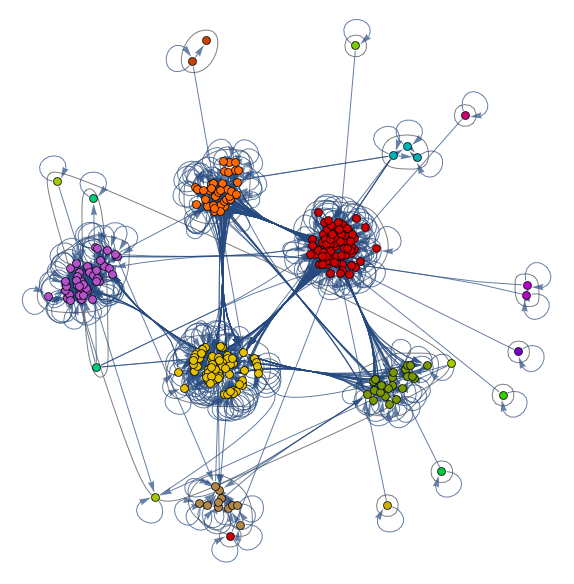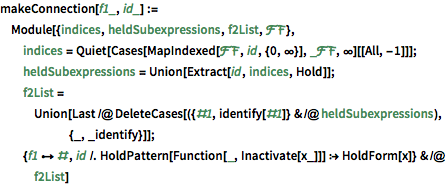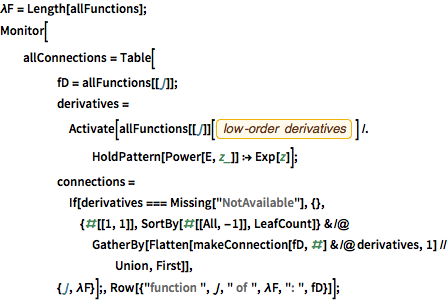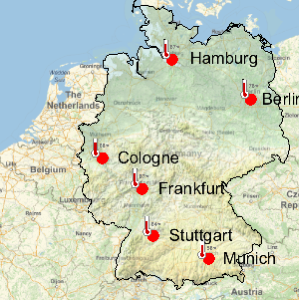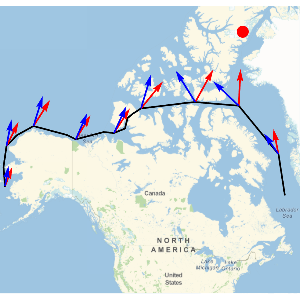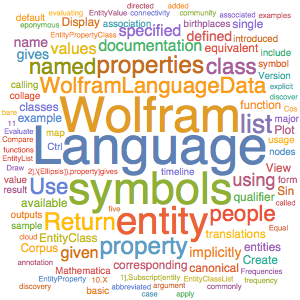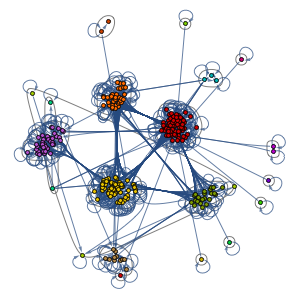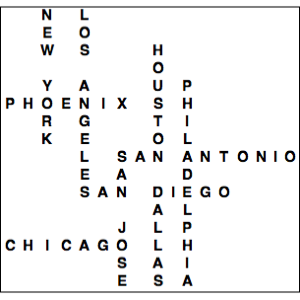特殊函数导数网络
Wolfram 语言包含了超过 300 种的内置数学函数. 考虑将微分操作应用于每个函数. 大多数情况下,导数结果会出现一个或多个函数. 对连接的量化提供了符号和对其的操作之间关系的有趣研究. 特别是,以下范例导出了从低阶微分生成的网络.
与初等微积分中学到的相同,对自然对数的微分会给出一个倒数函数.
In[1]:=
D[Log[x], x]Out[1]=
另一方面,对于某些特定函数,导数可以直接用原来的函数表示.
In[2]:=
D[ProductLog[x], x]Out[2]=
的 MathematicalFunctionData 的 "LowOrderDerivatives" 属性提供快速方便的方法访问全部导数.
In[3]:=

Entity["MathematicalFunction", "EllipticF"][
EntityProperty["MathematicalFunction",
"LowOrderDerivatives"]] // TraditionalFormOut[3]//TraditionalForm=

收集所有函数和其参数特征,从而在微分后对其进行识别(为避免常见的指数的出现,不要寻找指数和平方根函数).比如,基于恒等式 ![]() ,函数 Sec 包含函数 Tan 以及其自身,结果产生两个连接.
,函数 Sec 包含函数 Tan 以及其自身,结果产生两个连接.
显示完整的 Wolfram 语言输入
In[10]:=

makeConnection[Entity["MathematicalFunction", "Sec"] ,
Function[{x}, Inactivate[D[Sec[x], x] == Sec[x] Tan[x]]]]Out[10]=

分析所有导数,除去图形中所有不重要的自循环,并可视化产生的图形结构.
显示完整的 Wolfram 语言输入
Out[12]=
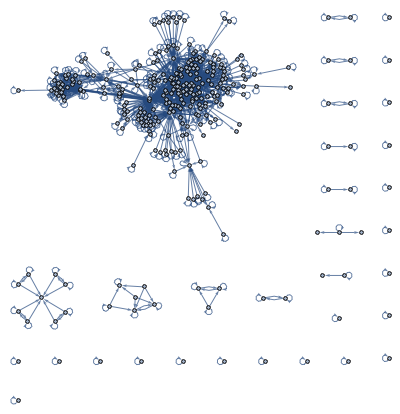
计算连接数目.
In[13]:=
Flatten[allConnections, 1] // LengthOut[13]=
找出自循环.
In[14]:=

selfLoops =
Select[ConnectedComponents[
Graph[Flatten[allConnections /. DirectedEdge -> UndirectedEdge,
1][[All, 1]]]], Length[#] == 1 &]Out[14]=
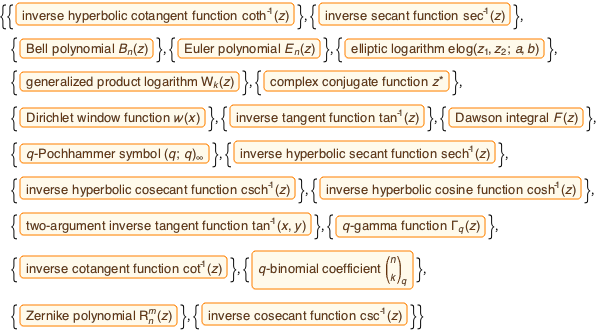
找出微分后闭合的函数组,并用有标签的图形进行可视化.
显示完整的 Wolfram 语言输入
Out[16]=
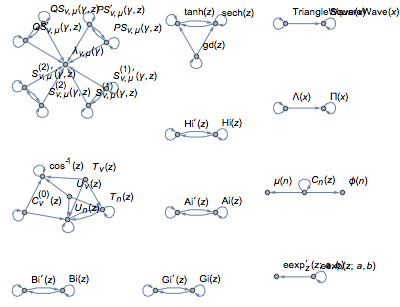
大多数的函数是图形的巨大分支的一部分. 将鼠标放置在顶点上查看函数,并在边上查看与函数相连接的导数.
In[17]:=
allConnectionsRest =
Select[Flatten[allConnections, 1],
FreeQ[#,
Alternatives @@
Flatten[{selfLoops, smallLoops}], \[Infinity]] &];In[18]:=

grf = Graph[allConnectionsRest[[All, 1]],
VertexLabels -> Placed["Name", Tooltip],
EdgeLabels -> ((#1 -> Tooltip[" ", Column[#2]]) & @@@
allConnectionsRest),
PerformanceGoal -> "Quality",
ImageSize -> Full]Out[18]=
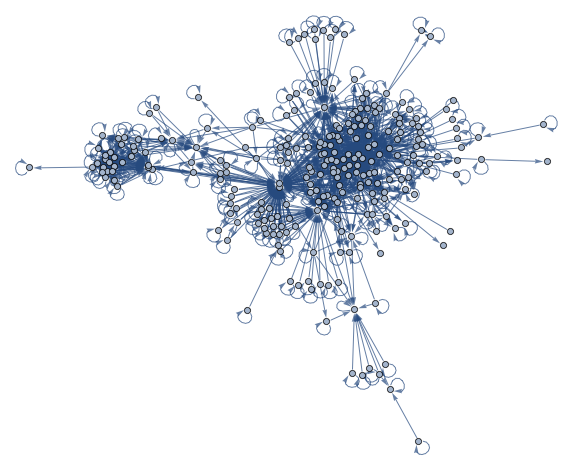
将图形分割为社区分别显示椭圆函数、超几何函数、窗口函数、泽塔函数和其他函数组.
In[19]:=
CommunityGraphPlot[grf,
FindGraphCommunities[grf, Method -> "Modularity"]]Out[19]=
